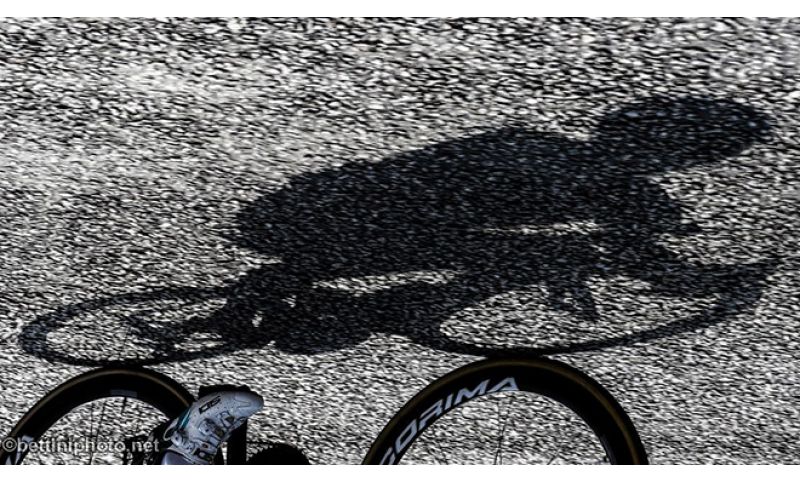

Pain, anger, bewilderment: this is what we experience every time one of our athletes loses their life, and so it could only be for the beloved Sara Piffer, the last on a tragic and unbearable list.
And every time this happens, the repetition of many exclamations becomes inevitable such as: "one cannot die like this", "enough with the cyclists' massacre", "there's a lack of respect for vulnerable users", "harsher penalties and sanctions for offenders", "a cultural shift is needed", "authorities and the Government must intervene for a decisive change of course", and much more.
Expressions of emotional spontaneity widely understandable and shareable that however, for those who have a role and power in the civil and sports field, must push far beyond, towards concrete actions for concrete results, avoiding the risk of mere circumstantial statements.
After Sara's death, at the urging of President Dagnoni, the sports minister Abodi himself declared his intention to take charge by involving the competent ministries and listening to the FCI.
All this is welcome, but to avoid turning hopes into solutions, the question is: precisely, what do we intend to ask for the protection of cyclists during training? Because this is what we are talking about, while being aware of other aspects such as race safety or cyclists' safety in general.
Make no mistake, on this front, parents' fear is at alert level and the discouragement of grassroots societies is equally high. Just as it is serious that safe working conditions cannot be guaranteed for those who make cycling their profession.
Beyond the consequences of demographic decline, if the perception that cycling is a sport where one can realistically lose their life were to take hold, the potential damage could be irreversible. And I believe this is the awareness of the FCI president when, after his clear reconfirmation, he indicated safety as a priority of his new mandate.
Work hypotheses can be many and many can be right, just think of the recent and very useful Quarrata conference, but since no one will ever achieve an optimal, definitive condition, almost risk-free, let's put in writing where we want to start, avoiding those generic titles that say everything and nothing. To overcome fear, families, societies, athletes need to understand. A sort of safety "roadmap" is needed, including travel times.
The new highway code, with the amendment of art.148 gave us the rule of one and a half meters for overtaking cyclists. An important result, primarily wanted by ACCPI, which must be spread and enhanced so that the metric measure becomes above all a measure of consciousness in wanting to carefully consider individual circumstances each time. I hope this rule is not dismissed as completed simply because it was obtained.
But, if, as many say, rules are not enough and rules must be respected, then one thing that the sports minister and his colleagues Salvini and Piantedosi can do in a few weeks is to finance through their ministries and the Council Presidency a vast television and journalistic information campaign to safeguard cyclists and cycling races. This is done for many categories and I don't think our cyclists deserve less than abandoned dogs on the highway. Here there are no laws to modify, but only a willingness to spend, also in the economic sense, demonstrating coherence with commitments and giving a strong signal of wanting to turn the page, of wanting to affirm a different culture. The Country and cycling need examples.
The long discussion on the new Highway Code should have paid more attention to competitive cycling, but nothing is truly lost. The text that came into force on December 14th last, as experts say, simply contains urgent corrective measures, while the real reform will be the one that will occur through the delegated law granted to the Government, whose path must be completed by December of this year.
For this purpose, a specific working group will be set up that will propose, modify and adjust everything possible and which lends itself well for FCI proposals to be brought to that table. It would be a real shame to miss this opportunity to request the presence of cycling experts who can advance appropriate solutions for protecting athletes during training, such as: the possibility of being optionally escorted by appropriately equipped vehicles (flashing lights, "cyclists in training" sign, etc.), the possibility of traveling in parallel lines as they are safer (as already happens in Switzerland and Germany), as well as the use of motorcycle escorts or technical escorts in signaling activities for their protection. Not new proposals, which on several occasions have found consideration in the Ministry of Interior's environment.
But beyond this, the FCI itself can immediately better protect its athletes during training, with a quick, so to speak, in-house solution, introducing in the Road Activity Implementation Rules (and then in the R.T.) that the luminous signaling devices that must always be present and functioning on the bike, as established by the new art. 68 of the Highway Code, must also be mandatorily kept on, to increase the possibility of being seen, a condition almost always mentioned by those who hit a cyclist.
This was done years ago for the helmet despite the Highway Code not providing for it, it can be done the same now for these very useful luminous devices, increasingly less invasive and increasingly effective, true lifesavers. Perhaps with the help of a specific allocation by the Federal Council so that the obligation finds application quickly and without additional burdens for societies and families.
For safety, much more can be done on multiple fronts. But in the meantime, if desired, it is possible to transform the mourning for Sara and for others before her, into concrete commitment so that cycling, in addition to being a school of life, is always life!

Se sei giá nostro utente esegui il login altrimenti registrati.